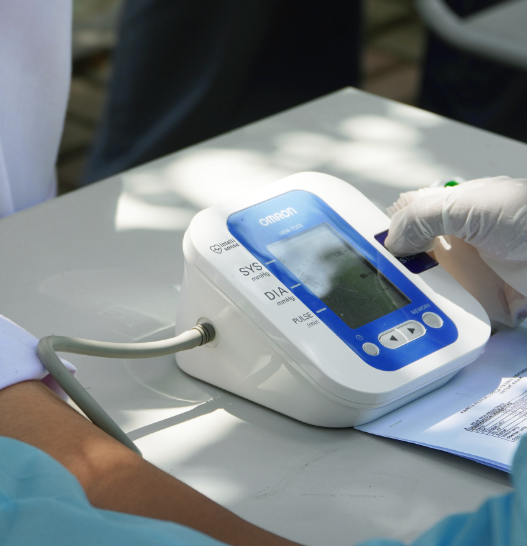Are you unsure whether you should carry out a summative evaluation for your medical devices internally or externally? Would you like to make an informed decision that meets your needs? In this article, we present the advantages and disadvantages of the internal and external options in a neutral way to help you make your decision.
We assume the following three options:
- An internal usability and UX department
- A freelancer
- An agency that specializes in medical usability
Enjoy reading!
The solution must fit your needs:
There is no single answer as to whether conducting a summative evaluation should be done internally or externally. The choice depends on your specific requirements (and of course how you are set up and utilized internally). The weighting of your needs will ultimately determine which solution suits you best. A combination of internal and external approaches may even make sense.
In order to use the following list of advantages and disadvantages, you should first be clear about your own needs regarding the implementation of a summative evaluation and the requirements you have for internal positions, freelancers or external agencies.
We will guide you through the criteria that you can use to make a decision.
Advantages of conducting a summative evaluation internally:
- Availability: internal resources are continuously available and can be deployed flexibly.
- In-depth product understanding: The internal team develops a deep understanding of your medical devices through many years of collaboration.
- More cost-effective: Existing internal resources can save costs.
- Flexibility: You have control over the use of internal resources and can act flexibly.
Disadvantages of conducting a summative evaluation internally:
You may not be responsible for deciding whether or not to carry out an internal evaluation. If you do, you should be aware of the following disadvantages:
- Lack of neutrality: internal researchers may tend to distort test results because they are familiar with the company’s objectives.
- Long start-up time: Setting up an internal department requires time and patience.
- High or low utilization: An internal department can be either overworked or underutilized, which can lead to efficiency issues.
- Commitment for many years: Creating an internal department requires long-term commitment.
- Costly recruiting: Hiring qualified employees can be a challenge.
- Work processes need to be developed: Establishing appropriate processes requires additional resources.
- Lack of scalability: Internal resources may not be flexible enough to cover unexpected needs.
Advantages of conducting a summative evaluation externally with a freelancer:
- External view: A freelancer can provide a neutral perspective on your product.
- Speed: Freelancers can be available quickly and often require little preparation time.
- Flexibility: You can use freelancers as needed.
- Lower costs: Freelancers can be cheaper than the other two options if you only need specific services.
Disadvantages of conducting an external summative evaluation with a freelancer:
- Lack of scalability: freelancers cannot provide additional resources as demand increases.
- Individual: In the event of illness, a freelancer’s work may come to a standstill.
- Limited expertise: Freelancers may only specialize in certain areas and thus only be able to cover part of your summative evaluation.
- Lack of quality assurance: There may not be enough information about the quality of a freelancer.
Advantages of conducting an external summative evaluation with an agency:
- High scalability: agencies can provide staff as needed.
- Speed: Agencies can deliver results quickly.
- Flexibility: Agencies can dynamically provide the right personnel.
- Visible quality features: Agencies offer clear quality standards. For example, a TÜV-certified QM system in accordance with ISO 13485.
- High quality standards: Agencies often have many years of experience and expertise.
- Broad range of experience: Agencies have experience with different clients and user types, but also with the requirements of Notified Bodies, which are essential for the approval of your medical device.
- External view: Agencies can point out sources of error and offer a neutral perspective.
- Neutral user recruiting: Agencies can recruit neutrally.
- Interdisciplinary set-up: Agencies have experts from various fields.
- Easy to change: The collaboration with an agency can be flexibly adapted.
Disadvantages of conducting an external summative evaluation with an agency:
- Higher costs: agencies can be expensive.
- Search for an agency: The search for a suitable agency requires time and effort.
- Changing contact persons: Some agencies may involve different contact persons.
- Training time: Agencies may need time to familiarize themselves with the corporate language.
Conducting a summative evaluation for medical devices – internally or externally? What is the right solution for you?
As already mentioned, the best solution depends on your preferences and requirements. An internal department offers long-term collaboration, but may lack the external perspective. A freelancer can be used flexibly, but may not offer the breadth of expertise. An external agency offers quick results, flexibility and high quality standards, but requires a corresponding budget and time investment for the search.
If you are sure that you will be using an external service provider, take a look at our “Checklist for external service providers”.
Conclusion
You now know the advantages and disadvantages of internal and external solutions for conducting a summative evaluation for medical devices. Now you can make your decision based on your needs and requirements.
Are you sure that you want to carry out your summative evaluation with an external service provider? Then we would of course be delighted to be on your shortlist. To give you an overview of how we carry out a summative evaluation, we recommend this page.
If you would like to discuss your specific case with us directly, please get in touch using our contact form. We look forward to hearing from you.



